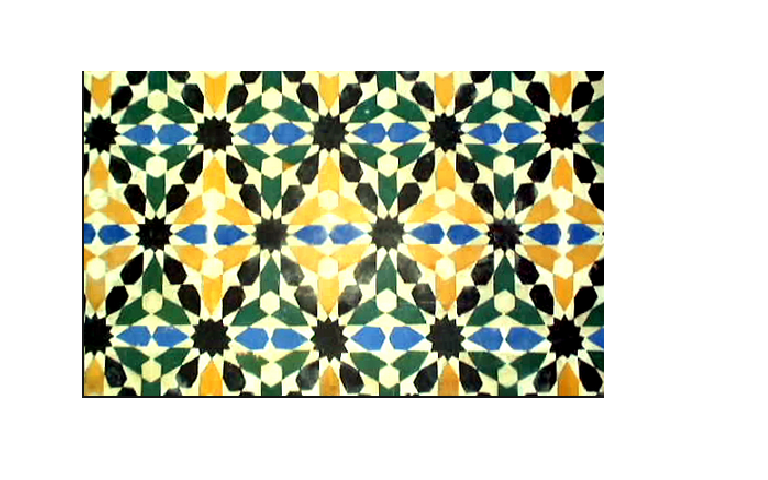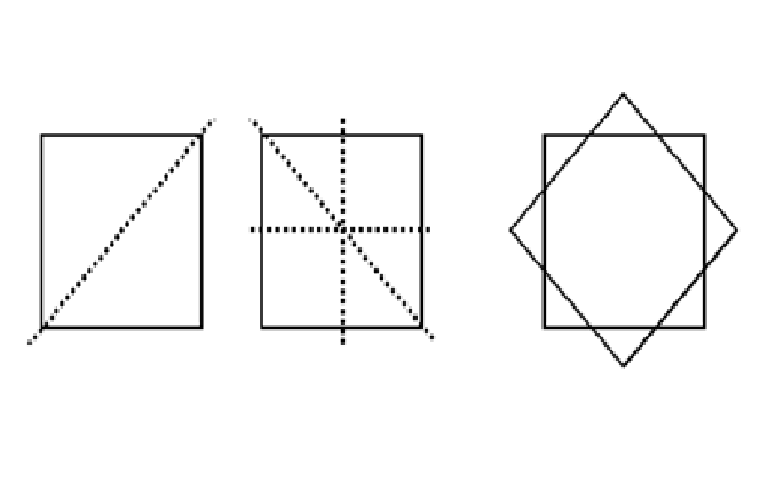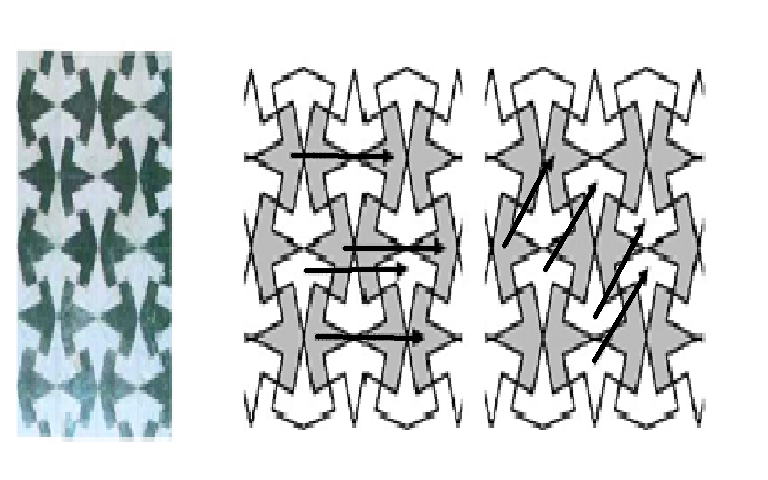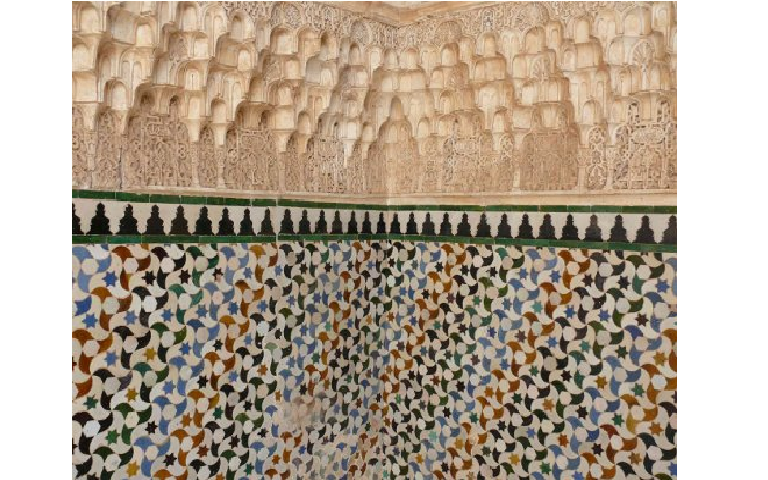
In order to give a precise meaning to the word ´symmetry´, we need to introduce the geometric concept of a rigid motion. A rigid motion of an object is a motion that keeps unchanged the dimensions (i.e., size, shape, angles, distances) and relative position of the points on that object.
Throwing a ball (but not breaking it or deforming it in any way). Or driving a car (assume ideal situation, i, e. no accidents) are examples of rigid motions. There are four types of rigid motions in the place: translation, reflection, rotation and glide reflection.
Translation is a motion of an object along a line in the give distance, in such a way that what is horizontal remains horizontal, and what is vertical remains vertical throughout the motion (i.e., there are no turns).
A reflection is determined by a line (called a mirror line, a line of reflection, or an axis of reflection). Placing an object on one side of the creates the image on the other side. For instance, a reflection (with respect to a vertical line) transforms the symbol.
A rotation is a turnaround the given point (called centre of rotation) for a given angle (called angle of rotation). According to a convention. All rotations are performed counterclockwise.
A glide reflection is a combination: first, a mirror reflection, and then a translation in the direction parallel to the mirror are performed.our footprints in snow – assuming we are walking along a straight line- are glide reflections of each other: the two consecutive footprints are mirror images of each other, but are located at a distance (length of our step) apart from each other.

We are now ready to give a precise definition of what it means to be symmetric.

Any rigid motion that leaves the given object apparently unchanged is called a symmetry of that object. For instance, placing a mirror along a diagonal of the square will keep the square´s appearance unchanged. The remaining mirror reflections that are symmetries of the square are shown in dashed lines in Figure above.

Mosaic and its translation symmetries
